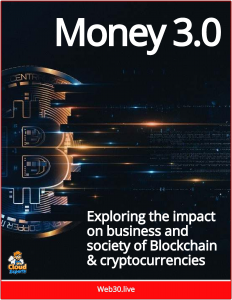Autonomous Agents: When AI Wallets Outnumber Humans
As stablecoins redefine global payments, AI-driven wallets will be the interface that makes this evolution accessible to billions.
 The rise of stablecoins as a global payments layer has ushered in a new era of financial innovation, and at the forefront of this transformation are AI-driven wallets.
The rise of stablecoins as a global payments layer has ushered in a new era of financial innovation, and at the forefront of this transformation are AI-driven wallets.
These are not merely digital containers for cryptocurrencies but intelligent platforms that blend the security and decentralization of blockchain with the predictive power and automation of artificial intelligence.
By integrating machine learning, natural language processing, and real-time analytics, AI-driven wallets simplify the complexities of crypto transactions, making stablecoins—digital currencies pegged to stable assets like the U.S. dollar or euro—accessible to everyone from individual users to multinational corporations.
Stablecoins
As stablecoins process trillions in transactions annually, these wallets are becoming the critical interface for a financial ecosystem that is faster, cheaper, and more inclusive than ever before. Unlike traditional crypto wallets, which require users to manually navigate private keys, gas fees, and blockchain networks, AI-driven wallets act as smart assistants, streamlining every aspect of digital asset management.
For instance, they analyze blockchain networks in real time to optimize transaction costs and speed, selecting the most efficient chain—whether Ethereum, Solana, or Polygon—for a stablecoin transfer. By predicting network congestion, these wallets can reduce transaction fees by up to 30%, saving users significant costs.
A cross-border payment of $1,000 in USDC, which might cost $30 via traditional banking, can be completed in seconds for just $0.05. Beyond cost savings, these wallets use natural language processing to offer intuitive interfaces, allowing users to execute transactions with simple voice or text commands, such as “Send $100 in USDT to my supplier in Singapore.” By learning from user behavior, they personalize the experience, suggesting recurring payments or highlighting DeFi investment opportunities tailored to individual preferences.
Security is a cornerstone of AI-driven wallets, addressing one of the biggest barriers to crypto adoption. Leveraging machine learning, these wallets detect anomalies and prevent fraud with over 90% accuracy, flagging suspicious activities like unauthorized transfers to unknown addresses.
If a wallet senses an unusual USDC transaction, it can pause the process and prompt multi-factor or biometric authentication, such as facial recognition, to ensure user safety. This proactive approach is critical in a world where cyber threats are evolving rapidly.
Additionally, AI-driven wallets enhance compliance with global regulations like Europe’s MiCA or the U.S.’s proposed STABLE Act by automating Know Your Customer (KYC) and Anti-Money Laundering (AML) processes. They verify identities, monitor transactions for illicit activity, and generate compliance reports, reducing the regulatory burden on users and businesses alike.
DeFi
In the realm of decentralized finance (DeFi), AI-driven wallets are unlocking new possibilities for stablecoin holders. For users engaging with platforms like Aave or Curve, these wallets automatically rebalance portfolios to maximize yields, analyzing real-time data on interest rates and liquidity pools to allocate USDC or DAI to the most profitable opportunities.
Returns of 5–10% annually in low-risk DeFi strategies are achievable with minimal user effort, as the wallet’s AI handles the complexity. Moreover, these wallets bridge the gap between crypto and traditional finance, enabling seamless conversions between stablecoins and fiat currencies, payments to merchants, or integration with bank accounts.
Stripe’s Stablecoin Financial Accounts, for example, allow businesses to hold USDC, pay suppliers, and issue stablecoin-linked Visa cards, all managed through AI-driven interfaces that simplify accounting and compliance.
The real-world impact of AI-driven wallets is already evident across diverse use cases. Freelancers in emerging markets like Nigeria or India use these wallets to receive USDC payments from global clients, bypassing the high fees and delays of traditional bank transfers.
Merchants, empowered by startups like Cashnote.io, integrate AI-driven wallets into point-of-sale systems to accept stablecoins alongside fiat, with AI calculating real-time exchange rates to protect against currency fluctuations.
SpaceX
Corporations like SpaceX leverage these wallets for treasury operations, automating conversions between local currencies and stablecoins to optimize cash flow and mitigate exchange rate risks. In DeFi, retail investors rely on AI wallets to navigate yield farming, while in underserved regions, these wallets empower the unbanked to store and spend stablecoins via mobile apps, fostering financial inclusion.
Leading players like Trust Wallet, ZenGo, and Coinbase Wallet are driving innovation in this space. Trust Wallet integrates AI to optimize transactions and suggest DeFi opportunities based on user risk profiles, while ZenGo’s keyless security model uses AI for facial recognition and predictive routing.
Coinbase Wallet incorporates AI to automate compliance and personalize DeFi recommendations, catering to both retail and institutional users. Stripe’s acquisition of Bridge, a stablecoin infrastructure startup, has further accelerated the development of AI-driven wallet solutions, powering its Stablecoin Financial Accounts.
Solana
Emerging startups like Easy, built on Solana, are also simplifying stablecoin payments for merchants, demonstrating the growing ecosystem of AI-powered crypto solutions. The convergence of AI and crypto through these wallets is transformative, enabling scalability, accessibility, and innovation. With stablecoin transaction volumes projected to exceed $10 trillion annually by 2030, AI-driven wallets will handle a significant share of these flows, processing millions of transactions simultaneously.
They make crypto intuitive for non-technical users, driving mainstream adoption, while their fraud detection and security features address trust concerns. The programmability of stablecoins, combined with AI’s decision-making capabilities, is spawning new financial products, such as autonomous agents that execute cross-border trades or manage corporate treasuries.
Stripe’s AI foundation model for payments, launched in 2025, exemplifies this potential, reducing fraud by 64% and boosting checkout conversion rates by 100x.
Despite their promise, AI-driven wallets face challenges. Privacy concerns arise from AI’s reliance on user data, requiring robust safeguards to comply with regulations like GDPR or CCPA. Evolving regulatory frameworks demand agility to meet new compliance standards, while non-crypto users may hesitate to adopt these wallets due to unfamiliarity with blockchain technology.
Ai Blockchain
Technical complexity also poses a hurdle, as integrating AI with blockchain requires significant computational resources, potentially limiting accessibility on low-end devices. Nevertheless, the future of AI-driven wallets is bright. By 2030, we may see fully autonomous “agentic” wallets that negotiate transactions or optimize DeFi yields without user input, interoperable wallets bridging multiple blockchains and fiat systems, and embedded finance solutions integrating stablecoin payments into everyday apps.
AI-driven wallets are more than a technological leap—they are a gateway to a financial future where money moves as effortlessly as information. For individuals, they offer empowerment, enabling anyone with a smartphone to participate in the global economy.
For businesses, they unlock efficiency, reducing costs and opening new markets. For developers and entrepreneurs, they present an opportunity to build transformative solutions at the intersection of AI and crypto.
As stablecoins redefine global payments, AI-driven wallets will be the interface that makes this vision accessible to billions. The time to embrace this technology is now, as we shape a world where financial systems are fast, inclusive, and powered by the intelligence of AI and the trust of blockchain.



